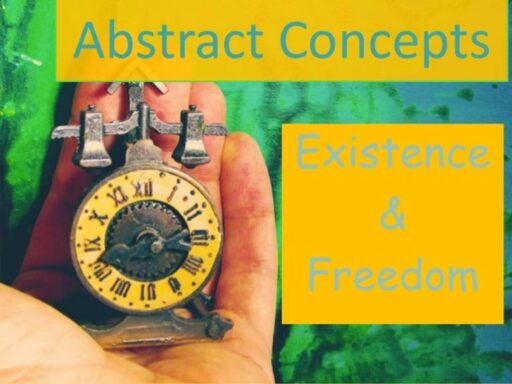Table of Contents
In recent times, the intersection of urban studies and religious demographics has become a focal point for researchers seeking to understand how faith-based communities influence socioeconomic dynamics within cities. The advent of big data has provided unprecedented opportunities to explore these relationships, offering granular insight into patterns of segregation, mobility, and economic integration as they relate to religious affiliation. This article delves into the ways in which city data is harnessed to examine the socioeconomic impacts of religion, with a particular emphasis on urban segregation, economic integration, and methodological advancements in the field.
Key Takeaways
- Big data sources, such as geotagged tweets and mobile phone data, have revolutionized the study of urban segregation, revealing intricate patterns of mobility and interaction among different religious communities.
- Innovative analytical methods, including community detection and network analysis tools, have provided new perspectives on the socioeconomic impacts of religion, allowing for multi-dimensional analysis of segregation.
- Studies have shown that individuals from religiously homogeneous neighborhoods exhibit distinct mobility patterns, which can both reinforce and reduce segregation within urban environments.
- Economic integration within religious contexts is multifaceted, encompassing both social and place-based explorations, and is influenced by factors such as preferential return to familiar spaces.
- Methodological advances in data collection and analysis have enabled researchers to observe dynamic segregation patterns with high spatiotemporal granularity, offering insights into the temporal dynamics of religious observance and its socioeconomic implications.
The Role of Big Data in Unveiling Socioeconomic Patterns

Emergence of Large-Scale Data Sources
The advent of big data has revolutionized the way researchers understand and analyze socioeconomic patterns. Emerging data sources have enabled a nuanced understanding of segregation at a large scale, while also allowing for detailed examinations at the micro-level, such as individual blocks within cities.
- Large-scale insights into segregation levels
- Detailed block-level examinations
- Near real-time analysis with high temporal granularity
- Insights into dynamic segregation patterns and trends
The integration of extensive mobility geolocation data with social network data has been particularly transformative, shedding light on daily segregation experiences and the impact of religion on urban life.
The ability to analyze data from entire countries or major metropolitan areas has uncovered patterns of segregation that were previously difficult to discern. This has opened up new avenues for research into the socioeconomic impacts of religion, providing a richer, more granular understanding of how religious affiliation can influence social and economic integration within urban environments.
Innovative Analytical Methods in Segregation Research
The advent of big data has revolutionized the field of segregation research, introducing cutting-edge analytical methods that delve into the complexities of urban segregation. The theory of mobility homophily, for instance, has been substantiated in various studies, highlighting its significance in understanding not just where people live, but also their daily segregation patterns. This theory underscores the importance of considering both residential and non-residential contexts when analyzing segregation.
The integration of mobility geolocation data with social network information has been pivotal in exposing the nuanced disparities in individual segregation experiences. This holistic approach provides a more comprehensive picture of how people interact within urban spaces.
While traditional methods often approximated segregation by measuring time spent at different locations, innovative approaches now also consider interactions during transit, such as on public transport. This shift towards including en route segregation emphasizes the need for equitable transport systems. Moreover, the analysis of the built environment and activity spaces has become increasingly prevalent, offering insights into the potential co-presence of diverse social groups beyond their residential areas.
The table below summarizes the key analytical methods and their focus areas in segregation research:
| Method | Focus Area |
|---|---|
| Mobility Homophily | Daily Segregation Patterns |
| En Route Segregation | Equitable Transport Systems |
| Built Environment Analysis | Co-Presence in Urban Spaces |
| Activity Space Approach | Human Mobility Data |
These methods represent a paradigm shift from traditional residential segregation studies to a more dynamic understanding of social interactions and mobility within cities.
Integrating Mobility and Social Network Data
The integration of mobility geolocation data with social network data marks a significant advancement in understanding urban dynamics. By analyzing the vast amounts of data generated by city dwellers as they move and interact, researchers can now explore patterns of segregation and integration with unprecedented detail.
The synthesis of these two data streams provides a multi-dimensional view of urban life, revealing the complex interplay between where people go and who they connect with.
This approach has led to the development of models that capture the dual aspects of economic integration, such as the social exploration and preferential return model. Such models are instrumental in dissecting the nuances of urban segregation and the socioeconomic impacts of religion.
Here is a summary of key contributions in this field:
- Xu et al. (2019) and Silm et al. (2021) highlighted the emergence of large-scale data sources that unveil new patterns.
- Moro et al. (2021) and Nilforoshan et al. (2023) utilized mobility data to construct large-scale networks and apply network analysis tools.
- The theory of mobility homophily has been confirmed across multiple regions, extending the understanding of daily segregation experiences.
Assessing the Impact of Religion on Urban Segregation

Spatial Segregation and Religious Communities
The interplay between religious communities and spatial segregation is a complex phenomenon, influenced by a myriad of factors. Security barriers and fear, for example, can significantly impact the ability to move and interact within urban spaces, perpetuating segregation cycles. Studies using GPS tracking have revealed distinct mobility patterns among religious groups, such as Catholic and Protestant students in Northern Ireland, who tend to move within different areas but converge in shared spaces like shopping and entertainment venues.
Social networks within ethnic groups also play a pivotal role in shaping segregation patterns. These networks can lead to varying experiences of segregation at the individual level, yet they often correlate with broader social-level spatial segregation. Trust within and between communities emerges as a crucial factor in either reinforcing or bridging the divides.
Quantitative studies on socio-spatial segregation have traditionally focused on static measures, such as the distribution of residential locations across neighborhoods. However, the dynamic nature of human mobility and social interactions calls for a more nuanced understanding of how segregation unfolds in the urban fabric.
The table below summarizes key findings from recent studies on the relationship between religious segregation and mobility patterns:
| Study | Year | Key Finding |
|---|---|---|
| Selim | 2015 | Security barriers impact mobility, reinforcing segregation |
| Roulston and Young | 2013 | Shared spaces among religious groups in Northern Ireland |
| Dixon et al. | 2020 | Mobility choices influenced by perceived intergroup threats |
| Hernandez and Titheridge | 2016 | Restricted travel due to perceived fear affects segregation |
| Silm and Ahas | 2014a | Social networks within ethnic groups affect segregation patterns |
Mobility Patterns within Religious Demographics
Understanding the mobility patterns within religious demographics offers insights into the broader socioeconomic landscape of urban areas. Religious communities often exhibit distinct mobility behaviors, which can be influenced by factors such as social comfort, security perceptions, and targeted policing practices. For instance, GPS tracking studies have revealed that in areas with religious tensions, such as Northern Ireland, Catholic and Protestant students tend to navigate different spaces, although they do converge in neutral zones like shopping and entertainment centers.
The following table summarizes characteristics of individual mobility and activity space by income level, which can be extrapolated to understand religious demographics:
| Aspect | Group | Mobility Patterns | Activity Space |
|---|---|---|---|
| Income | Wealthy | Longer trip distance | Diverse and widely spread |
| Less wealthy | Shorter trip distance | More localized |
Religious segregation is not solely a product of socioeconomic and institutional forces but is also shaped by individual choices and perceived intergroup threats. The resulting geographical isolation can limit access to employment, education, and other essential services.
It is crucial to recognize that mobility is not just about physical movement but also about the ability to interact and utilize spaces effectively. Trust and perceived security barriers play significant roles in shaping these patterns, perpetuating cycles of segregation and affecting economic integration.
Temporal Dynamics of Segregation and Religious Observance
The interplay between temporal dynamics and religious observance is pivotal in understanding urban segregation. Mobility patterns, influenced by religious practices and observances, delineate the rhythm of city life, often reinforcing existing socioeconomic divides. For instance, the frequency and timing of religious gatherings can lead to periodic congregation in specific areas, affecting local economies and social interactions.
The temporal aspect of segregation reveals the cyclical nature of movement within urban spaces, governed by both the static nature of residential choices and the dynamic flux of daily activities.
The following table summarizes the different approaches to socio-spatial segregation and their respective time scales:
| Approach | Segregation Type | Perspective | Subject | Time Scale |
|---|---|---|---|---|
| Residential | Residential | Urban Space | Residents | Static (year) |
| Built Environment | Network | Activity Space | Visitors | Dynamic (minutes–hours) |
| Experienced | Individual | Travels and Activities | Individuals | Dynamic (daily) |
Understanding these temporal patterns is essential for devising strategies that address the challenges of segregation. It is not just about where people live, but also when and how they move that shapes the urban tapestry.
Economic Integration and Social Exploration in Religious Contexts

The Dual Aspects of Economic Integration
Economic integration within the context of religious communities presents a complex interplay of both market-driven and socio-cultural factors. The integration of religion into societal structures often leads to enhanced community development and cohesion. This is achieved through fostering participation, trust, and mutual support among members. Economic integration can be dissected into two main aspects: the market integration, which involves the seamless exchange of goods, services, and labor; and the social integration, which encompasses the shared values and norms that facilitate cooperation within a community.
- Market Integration
- Facilitates trade and labor mobility
- Encourages economic efficiency and growth
- Social Integration
- Promotes shared cultural and religious values
- Strengthens community bonds and trust
Economic integration is not merely a financial or commercial endeavor but also a deeply rooted social process that reinforces the fabric of religious communities. It is this dual nature that makes it a pivotal element in understanding the socioeconomic impacts of religion.
Preferential Return Models and Religious Affiliation
Preferential return models provide a framework for understanding how religious affiliation influences the patterns of mobility within urban environments. These models suggest that individuals are more likely to revisit locations that align with their religious beliefs and practices. This behavior can lead to distinct mobility patterns among different religious groups, reinforcing socioeconomic segregation.
The concept of homophily, the tendency to associate with similar others, is evident in the mobility choices of religious communities. For example, data indicates that people from certain socioeconomic backgrounds often frequent neighborhoods with similar economic statuses. This is particularly true for religious groups that may prefer areas with places of worship and community services that cater to their specific needs.
- Homophily in social networks
- Influence of religious institutions
- Economic integration through mobility
The interplay between religious affiliation and mobility patterns is complex, yet it is crucial for understanding the socioeconomic landscape of urban areas.
Further research is needed to quantify the impact of religious affiliation on socioeconomic integration. By examining the mobility and activity spaces of different religious demographics, we can gain insights into the broader patterns of urban segregation and economic integration.
Quantifying Multi-Dimensional Aspects of Socio-Spatial Segregation
Understanding the multi-dimensional aspects of socio-spatial segregation requires a nuanced approach that considers various factors such as race/ethnicity, nativity, income, and education. The integration of these dimensions provides a more comprehensive view of segregation patterns.
To effectively quantify these aspects, researchers employ a range of metrics that reflect different facets of segregation, including evenness, exposure, concentration, centralization, and clustering. These metrics are applied to various scales of analysis, from individual travels to urban residential patterns.
The challenge lies in capturing the dynamic nature of socio-spatial interactions and the static elements of urban structure.
The following table summarizes three primary approaches to measuring socio-spatial segregation by their spatiotemporal scale:
| Approach | Segregation Type | Perspective | Subject | Time Scale |
|---|---|---|---|---|
| Residential | Residential | Urban Space | Residents | Static (Year) |
| Built Environment Network | Activity Space | Visiting Urban Space | Visitors | Dynamic (Minutes–Hours) |
| Experienced Individual | Travels and Activities | – | – | – |
As the field advances, the use of emerging-data studies offers broader spatial and population coverage with high spatiotemporal granularity. This allows for a more detailed and dynamic understanding of how socio-spatial segregation unfolds over time and across different urban contexts.
Methodological Advances in Studying the Socioeconomic Impacts of Religion

Community Detection and Network Analysis Tools
The advent of sophisticated community detection and network analysis tools has revolutionized the way researchers study the socioeconomic impacts of religion. These tools enable the dissection of complex social fabrics into discernible patterns of segregation and integration. By applying metrics such as network centrality, researchers can quantify the likelihood of different population groups sharing or traversing the same urban spaces, shedding light on the dynamics of religious co-presence in cities.
The granularity of data available today allows for an unprecedented understanding of how built environments influence social interactions among diverse groups.
Key network analysis metrics include:
- Integration Analysis/Closeness: Identifies areas likely to be frequented by diverse groups.
- Choice Analysis/Betweenness: Measures a space’s role in connecting people.
- Visibility Graph Analysis: Determines which spaces are visually connected, enhancing interaction opportunities.
These analytical methods are instrumental in capturing the dual aspects of economic integration: social and place explorations. By leveraging large-scale mobility data, researchers can construct comprehensive mobility networks and utilize community detection to reveal national-level segregation patterns.
High Spatiotemporal Granularity in Socioeconomic Studies
The advent of high spatiotemporal granularity in socioeconomic studies has revolutionized our understanding of socio-spatial segregation. Unlike traditional approaches that often focus on a single aspect of segregation, such as housing, emerging-data studies offer broader spatial and population coverage. These studies are capable of quantifying multi-dimensional aspects of segregation, including race, ethnicity, nativity, and income.
Activity space approaches have been instrumental in transcending the static, area-based investigations of segregation. By utilizing human mobility data, these approaches provide a dynamic perspective that captures the fluidity of social interactions beyond residential locations.
Socio-spatial segregation is no longer viewed merely as a static phenomenon. The integration of high spatiotemporal data allows for a nuanced understanding of how individuals with different socioeconomic backgrounds interact within urban spaces.
The table below summarizes three distinct approaches to socio-spatial segregation, highlighting the differences in spatiotemporal scale and the type of interactions considered:
| Approach | Segregation Type | Perspective | Subject | Time Scale |
|---|---|---|---|---|
| Residential | Residential | Urban space | Residents | Static (year) |
| Built Environment | Network | Activity space | Visitors | Dynamic (minutes–hours) |
| Experienced | Individual | Travels and activities | Urban space | Dynamic (varied) |
Challenges and Opportunities in Emerging-Data Studies
The advent of emerging data sources has revolutionized the field of socioeconomic studies, particularly in the context of religion’s impact on urban landscapes. These sources offer a granular view of segregation patterns, enabling researchers to dissect complex socioeconomic interactions at an unprecedented scale. However, the sheer volume and complexity of this data necessitate advanced analytical skills and tools.
While the potential for nuanced insights is vast, the challenges are equally significant. Data scientists are now pivotal in translating this potential into actionable knowledge. Their expertise is crucial in navigating the intricate landscape of big data, which often involves a blend of IT knowledge, data science acumen, and sector-specific experience.
The integration of mobility and social network data has shed light on the daily experiences of segregation, extending the scope of research beyond static residential patterns.
To effectively harness these opportunities, the field must address several key challenges:
- Ensuring data privacy and ethical considerations are met
- Overcoming the technical hurdles of data integration and analysis
- Bridging the gap between data science expertise and sector-specific knowledge
The table below summarizes the opportunities and challenges faced in emerging-data studies:
| Opportunities | Challenges |
|---|---|
| Granular insights | Data privacy |
| Large-scale analysis | Technical hurdles |
| Interdisciplinary research | Expertise gap |
Conclusion
In conclusion, the intersection of religion and socioeconomic factors within urban landscapes presents a complex mosaic of influences that shape the fabric of our cities. The integration of emerging data sources, such as geotagged tweets, mobile phone data, and GPS tracking, has revolutionized our ability to discern patterns of segregation and mobility that were previously obscured. Studies leveraging these datasets have illuminated the intricate dance between socio-spatial segregation and daily life, revealing that mobility can reduce the effects of segregation and that individuals from disadvantaged neighborhoods are more active in the metro area than once thought. By employing advanced analytical tools and network analysis, researchers can now explore the multifaceted impacts of religion on socioeconomic integration with unprecedented detail and temporal granularity. This article has underscored the transformative potential of city data in understanding the socioeconomic impacts of religion, offering insights that can inform policy and foster more inclusive urban environments.
Frequently Asked Questions
What role does big data play in understanding urban segregation related to religion?
Big data provides large-scale insights into segregation patterns, allowing researchers to examine nuanced details at the block level and understand the socioeconomic impacts of religion on urban segregation.
How can mobility and social network data be integrated in segregation research?
By leveraging mobility geolocation data and social network data, researchers can unveil patterns of segregation and religious community dynamics that were previously unobservable at such refined scales.
In what ways does religion impact economic integration in cities?
Religion can influence economic integration by shaping social and place explorations within urban environments, affecting how religious communities interact with and contribute to the broader economy.
What are the methodological advances in studying socioeconomic impacts of religion?
Advances include the use of community detection and network analysis tools, as well as the employment of high spatiotemporal granularity data to study dynamic segregation patterns related to religious observance.
How does the mobility of individuals from religious communities challenge traditional views of urban segregation?
Studies show that individuals from religious communities are often more mobile than previously thought, which challenges traditional views of segregation by revealing extensive travel for work or other activities.
What challenges do researchers face when using emerging data to study religion’s socioeconomic impacts?
Challenges include ensuring data accuracy and representativeness, dealing with the ethical implications of large-scale data collection, and translating complex data into actionable insights for policymakers.





